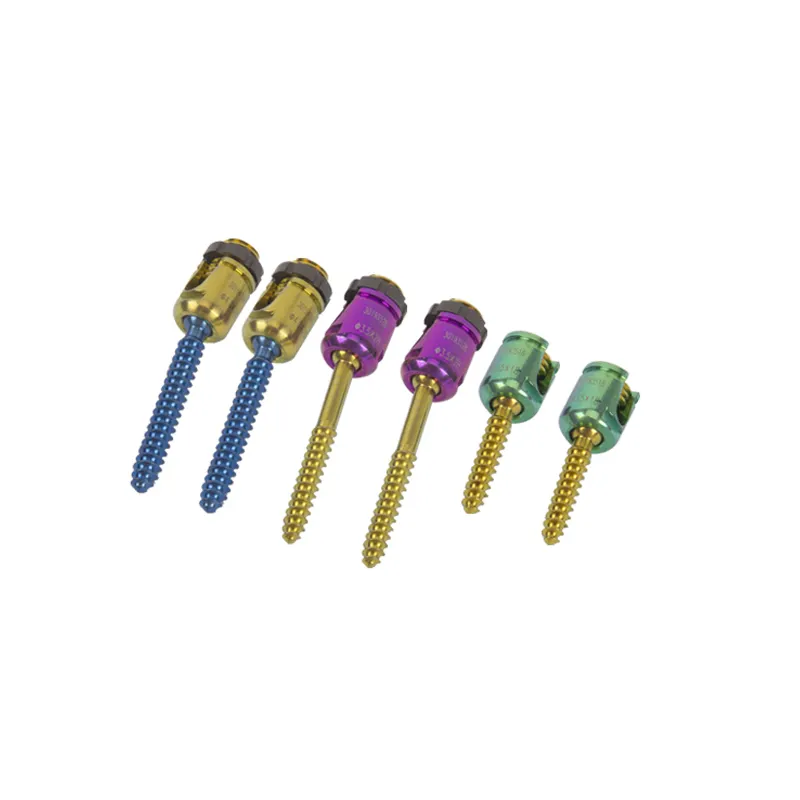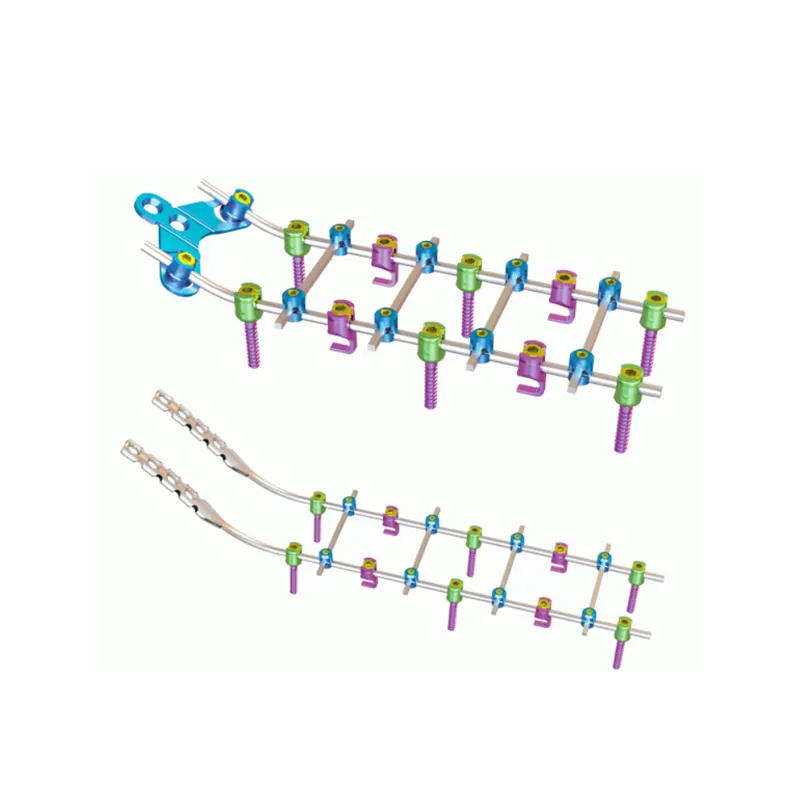Precision and Personalization in Orthopedic Surgery
In the field of orthopedic surgery, precision is not just a goal—it is a necessity. Each surgical case presents a unique combination of factors that must be carefully evaluated to achieve optimal outcomes. Among the most critical decisions in the process is the selection of the appropriate orthopedic implant. Far from being a one-size-fits-all solution, choosing the right orthopedic implant involves a comprehensive understanding of patient-specific anatomy, the nature of the injury or condition, and the expected functional outcomes. This complex decision-making process reflects the evolution of modern orthopedic care, where innovation and personalization intersect.
Factors Related to Patient Characteristics
Age and Bone Quality
The age of the patient plays a significant role in selecting an orthopedic implant. Younger individuals often have denser, healthier bone structures that are more receptive to traditional implants. In contrast, older patients, particularly those with osteoporosis or diminished bone density, may require specialized orthopedic implants that offer enhanced fixation and reduced risk of loosening over time. Surgeons must carefully evaluate the quality of the patient’s bone through imaging and diagnostics before making their decision.
Activity Level and Lifestyle
A patient’s daily activity level also affects the choice of orthopedic implant. Athletes and physically active individuals may require high-durability implants capable of withstanding repetitive stress and movement. Conversely, patients with limited mobility may benefit from simpler implant designs. Lifestyle choices, such as occupation, recreational activities, and overall health, contribute to tailoring the orthopedic implant to fit the individual's specific needs and recovery goals.
Anatomical and Biomechanical Considerations
Joint Geometry and Alignment
Understanding the specific anatomical geometry of the joint or bone is essential when selecting an orthopedic implant. Each patient has a unique skeletal structure, and implants must be compatible with their natural alignment. For example, the angle and curvature of a femoral bone may dictate the shape and fixation method of a hip implant. Advanced imaging and modeling technologies help surgeons plan and customize implants based on precise anatomical data.
Load Distribution and Stress Points
Biomechanical forces acting on a joint or fracture site determine how stress will be distributed across the orthopedic implant. If the stress is not evenly managed, it can lead to implant failure or bone resorption. Surgeons assess these factors to choose designs that accommodate physiological loads, especially in weight-bearing areas like the knee, hip, or spine. Materials such as titanium or cobalt-chromium alloys are selected for their ability to resist fatigue and wear.
Nature and Severity of the Condition
Type of Injury or Disease
The condition being treated significantly influences implant selection. A simple fracture may require a straightforward plate and screw system, while a complex joint replacement due to arthritis or trauma may necessitate a custom-designed orthopedic implant. Conditions like bone tumors, congenital deformities, or infections demand implants with unique attributes such as antimicrobial coatings or modular configurations.
Duration of Implant Use
Some orthopedic implants are intended for temporary support, while others are designed for long-term or permanent placement. For instance, a trauma-related implant may be removed after healing, whereas a joint replacement typically remains in the body for decades. The longevity and intended function of the implant are important parameters that guide material selection and design features.

Technological Innovations in Implant Design
3D Printing and Custom Implants
The advent of 3D printing has revolutionized the field of orthopedic implants. Surgeons can now design patient-specific implants that match the exact dimensions and contours of a patient’s anatomy. These personalized solutions lead to better fit, quicker recovery, and improved overall function. Orthopedic implant manufacturers collaborate closely with surgical teams to ensure the customization meets clinical objectives.
Smart Implants and Data Integration
Emerging technologies have given rise to smart orthopedic implants that can collect data on load, movement, and healing progression. These implants provide real-time feedback to both patients and surgeons, facilitating proactive adjustments in treatment plans. Although still an emerging field, smart implants represent the future of data-driven orthopedic care.
Surgical Technique and Implant Compatibility
Minimally Invasive Approaches
Modern surgical techniques emphasize minimal disruption to surrounding tissues. Orthopedic implants designed for minimally invasive procedures must be compatible with smaller incisions and reduced exposure. The implant's size, insertion tools, and fixation mechanisms are tailored to support these advanced techniques, resulting in less postoperative pain and faster rehabilitation.
Compatibility with Navigation Systems
Computer-assisted surgical navigation systems are increasingly used to enhance the accuracy of implant placement. Implants compatible with these technologies allow for real-time intraoperative adjustments, reducing the risk of misalignment. Compatibility between the implant and the navigation system is essential for optimizing outcomes in complex procedures like spinal or joint reconstructions.
Regulatory and Clinical Evidence
FDA Approval and International Standards
Every orthopedic implant used in surgery must comply with stringent regulatory standards. FDA approval in the United States and CE marking in Europe are essential benchmarks indicating safety and effectiveness. Surgeons often rely on clinically proven implants that have demonstrated successful outcomes in peer-reviewed studies and clinical trials.
Surgeon Experience and Peer Reviews
A surgeon’s familiarity with a particular orthopedic implant plays a role in selection. Experienced surgeons tend to choose implants they have worked with successfully in the past, balancing familiarity with innovation. Peer-reviewed feedback and surgical community recommendations provide valuable insights into performance, helping guide informed decisions.
Postoperative Goals and Patient Expectations
Recovery Timeline
Patient recovery goals influence the choice of orthopedic implant. Some patients may require rapid mobility to return to work or daily activities, prompting the selection of implants that enable early weight-bearing and mobility. Others may prioritize long-term stability over speed of recovery. Aligning the implant's capabilities with recovery expectations is critical to achieving patient satisfaction.
Functional and Aesthetic Outcomes
In certain procedures, particularly those involving visible areas such as hands or facial bones, the aesthetic outcome may be as important as function. Orthopedic implants designed for these cases must balance strength and subtlety, providing structural support while minimizing visual impact. Surgeons discuss these expectations in detail with patients before selecting the appropriate implant.
Multidisciplinary Team Collaboration
Role of Biomedical Engineers
Selecting an orthopedic implant is often a team-based decision. Biomedical engineers play a key role in evaluating implant design and material performance. Their technical expertise helps surgeons understand the biomechanical properties of each implant option, ensuring a well-informed choice.
Collaboration with Rehabilitation Specialists
Physical therapists and rehabilitation experts contribute insights into how different orthopedic implants will impact recovery and mobility. Their input can influence decisions regarding implant flexibility, motion range, and potential limitations, supporting a holistic approach to patient care.
FAQ
What factors do surgeons consider when choosing an orthopedic implant?
Surgeons evaluate patient age, bone quality, activity level, type of condition, expected outcomes, and available technologies when selecting an orthopedic implant.
Are orthopedic implants personalized for each patient?
Yes, advancements such as 3D printing allow for highly customized orthopedic implants tailored to an individual’s anatomy and needs.
How important is the material of an orthopedic implant?
Material choice is crucial as it affects durability, biocompatibility, and how the implant interacts with the body over time.
Can a patient request a specific type of orthopedic implant?
Patients can discuss preferences with their surgeon, but the final choice is based on clinical criteria and surgical expertise.a
Table of Contents
- Precision and Personalization in Orthopedic Surgery
- Factors Related to Patient Characteristics
- Anatomical and Biomechanical Considerations
- Nature and Severity of the Condition
- Technological Innovations in Implant Design
- Surgical Technique and Implant Compatibility
- Regulatory and Clinical Evidence
- Postoperative Goals and Patient Expectations
- Multidisciplinary Team Collaboration
- FAQ
 EN
EN
 FR
FR
 ES
ES
 AR
AR

